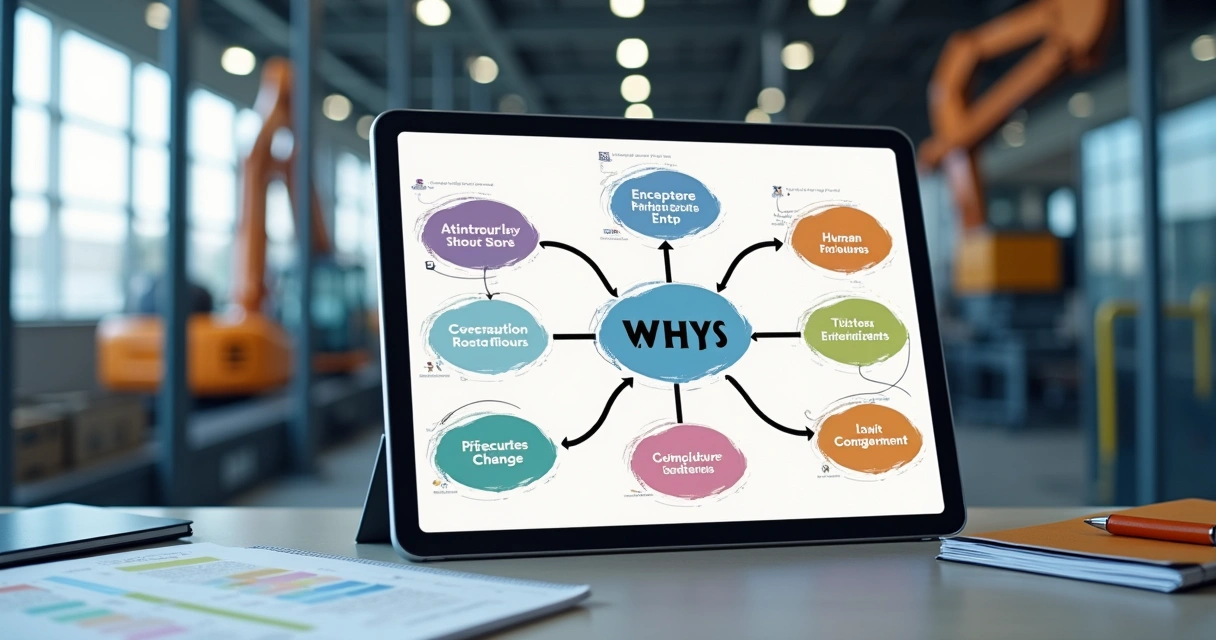Stop Doing This: Common Errors in Industrial Failure Analysis

If you’ve ever watched your maintenance team scramble after a breakdown, you probably know what chaos looks like in real life. Papers piling up, timelines slipping, safety hats thrown on desks—determined faces hovering over diagrams and oil-smudged instruction manuals. And yet, after hours of effort, the same failure crops up again the next month.
Something went wrong in the failure analysis. But what? Why do so many teams repeat mistakes, running in circles instead of getting ahead?
Why we keep getting it wrong
Sometimes, a single oversight sparks months of problems. It’s a story told in every plant. A machine shuts down, the team jumps in, and everyone rushes to patch things up. Quick fixes become the norm, and causes are guessed rather than proven. This cycle leads to rework, mounting costs, and worse—it can drive a culture of blame or, even more subtly, a habit of accepting the same mistakes as “just the way it is.”
Don’t patch. Understand, that’s the real fix.
Here are the most common traps, backed by data and real stories from the industrial world.
The most common errors in failure analysis
- Jumping to conclusions without evidence
- Looking at the part, not the system
- Leaving people out
- Poor or missing documentation
- Skipping the root cause
- Ignoring what went well
- Neglecting corrective actions and follow-up
- Insufficient or outdated training
Jumping to conclusions without evidence
Have you ever heard someone say, “I know what happened, I’ve seen it before”? Sometimes, experience leads us down the wrong path. If a bearing fails, the familiar culprit is usually blamed—lack of lubrication, for instance. But unless evidence is gathered methodically, assumptions turn into expensive repairs that never solve the real issue.
This is where structured approaches, like those outlined in maintenance team success stories and frameworks such as Failure Mode and Effects Analysis (FMEA), prevent critical blind spots. A checklist isn’t just paperwork; it is a feedback loop that catches those hidden causes.
Looking at the part, not the system
It’s natural to zero in on the failed bolt, the burnt fuse, or the tripped sensor. But, as Discovery Engineering reports, focusing only on the failed component, rather than the broader context, can cause teams to miss multiple contributors. Perhaps the part was overloaded due to a sequence change upstream, or environmental conditions caused a ripple effect.
Machines are just parts, but failures are almost always about systems.
Looking at the big picture is more than good engineering. It is protection against repeat events.
Leaving people out
Designers, operators, technicians, and even temporary workers are all pieces of the puzzle. Overlooking human factors or not asking the people closest to the work what went wrong makes findings surface-level. According to Medical Alley’s study on causes of failure, design errors—many rooted in miscommunication or human oversight—cause nearly 60% of breakdowns.
Get the right voices at the table. Listen to the people who see the failure up close. They may not speak in engineering jargon, but their observations can be the missing link.
Poor or missing documentation
Repair logs filled out in a hurry. Reports that never get filed. Information living in someone’s head, then lost when they take vacation. Missed documentation is a recipe for reliving the same faults, again and again. Inadequate documentation and oversight slow down investigations and leave gaps.
If it’s not written down, it’s already forgotten.
Good documentation shouldn’t be a chore. Digital platforms such as Prelix simplify this, reducing steps while improving detail. Teams that document consistently solve problems faster—and keep those fixes.
Skipping the root cause
Sometimes, repair teams only treat the symptoms. The bearing gets replaced, but nobody questions why it failed so early. Maybe it was misaligned, maybe a change upstream increased the load, or perhaps a batch of cheap lubrication slipped through. Skipping root cause steps means patching instead of solving.
Tools like the “5 Whys” and smart diagrams are meant to break this loop. Prelix brings these into one place, generating a clear map from event to cause, so investigation outpaces guesswork. For practical tips and difference real root cause analysis makes, check out their practical guide for industrial teams.

Why context and follow-up often get overlooked
In the shadow of a big incident, teams sometimes forget to track improvements. Fixes are applied. But corrective actions without tracking or feedback often vanish or get replaced by old habits. The TapRooT refinery incident is a sobering example, where lacking deep analysis and not ensuring implementation led to a catastrophic repeat of failures.
- Fixes should be listed, checked, and reviewed.
- Responsibility for each step should be clear.
- Feedback must be captured and used to improve future analyses.
Otherwise, fixes fade and the cycle repeats.
Neglecting training and continuous learning
You might think once you teach the “how,” your team is set. But, according to studies on common maintenance gaps, missed or out-of-date training keeps errors alive. Tools change. Equipment upgrades. People move on.
Routine training, quick refreshers on best practices, and sharing stories from mistakes (and successes) all help. The best lessons are sometimes the hardest to recall—so keep them visible.
Taking simple steps toward better failure analysis
Mistakes in analysis often have simple roots. The hardest part? Changing old habits. But it’s not just about avoiding pain. The rewards go beyond repairs—these are gains in safety, uptime, and better working days.
- Encourage open discussion of incidents and findings.
- Use the right investigation tools, from templates to AI platforms like Prelix.
- Share not only official reports but also what was learned.
- Hold short reviews of completed fixes and their results.

If you want to see more approaches or practical steps, this guide on applying AI in RCA offers tips on mixing technology with experience for real change.
Conclusion: break the cycle, make change stick
Industrial failure analysis isn’t a riddle to solve once but a process to refine over time. Every error in analysis is a lesson—if we catch it. Invest in training, make your documentation count, and bring both evidence and people into the room. Technology, like Prelix, is there to help teams speed up these cycles, give structure to findings, and turn repeated trouble into real improvement.
Start seeing your failures as information, not frustration.
Ready to move beyond patching problems and get real about change? Try Prelix today and transform your failures into future wins. Or, if you want to explore even more resources, explore our practical RCA guides and AI-powered insights. It’s time to make your maintenance smarter.
Frequently asked questions
What is industrial failure analysis?
Industrial failure analysis is a process used to figure out why equipment, parts, or systems stop working as they should. It involves asking questions, collecting evidence, tracking events, and making connections from symptoms back to the actual causes. The outcome is not just knowing what broke, but understanding how and why, so future failures can be prevented. Teams will often use techniques like the Five Whys, FMEA, and root cause mapping for the best results.
What are common mistakes in failure analysis?
Mistakes include assuming the answer without enough proof, looking only at failed parts without considering the bigger system, leaving out key people from the investigation, failing to document the findings, and stopping short of identifying the root cause. Others are not following up on corrective actions or skipping ongoing training. These habits can keep teams locked in a loop of repeated breakdowns and incomplete fixes.
How to avoid errors in failure analysis?
Avoid errors by slowing down and gathering evidence before deciding the cause. Always examine the overall system, not just the failed component. Talk to everyone involved—especially those closest to the work. Document everything clearly, and use structured tools like FMEA or AI-assisted platforms. Finally, review whether corrective actions worked and keep refreshing team knowledge with regular training sessions.
Why is proper investigation important?
Proper investigation means finding the true reasons behind problems, not just obvious surface issues. This helps teams make confident decisions that actually prevent future losses. Without solid investigation, teams waste time, money, and—even worse—risk repeating the same problems. Good analysis is also tied to safer working conditions and smarter investments in maintenance.
What tools help improve failure analysis?
Useful tools include checklists, templates, Five Whys diagrams, FMEA spreadsheets, and digital platforms like Prelix that bring structure and speed to both data collection and reporting. Sharing resources like expertise and case studies can also keep teams current. These tools support not only faster investigation but more effective fixes, too.
